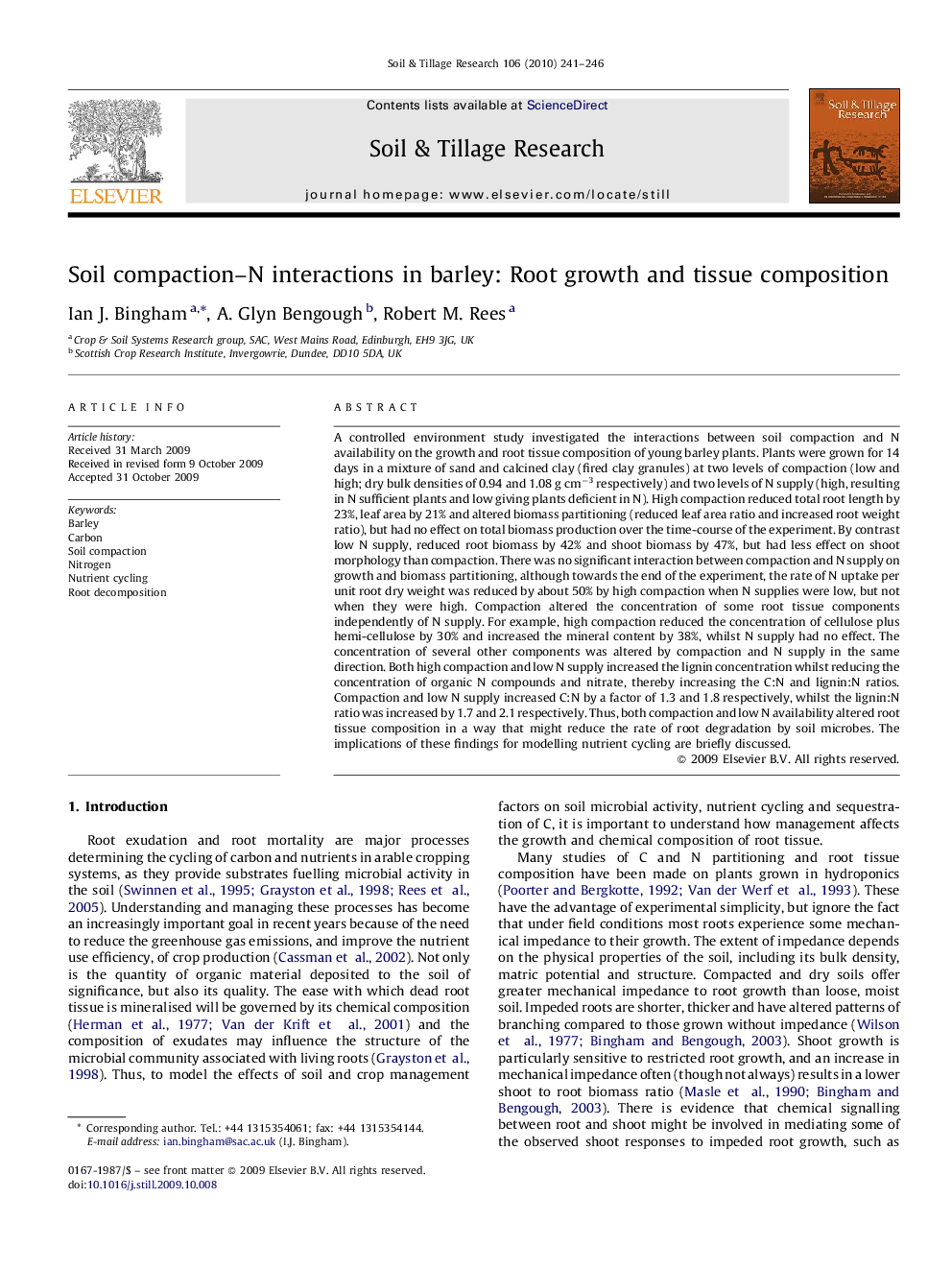| Article ID | Journal | Published Year | Pages | File Type |
|---|---|---|---|---|
| 306289 | Soil and Tillage Research | 2010 | 6 Pages |
A controlled environment study investigated the interactions between soil compaction and N availability on the growth and root tissue composition of young barley plants. Plants were grown for 14 days in a mixture of sand and calcined clay (fired clay granules) at two levels of compaction (low and high; dry bulk densities of 0.94 and 1.08 g cm−3 respectively) and two levels of N supply (high, resulting in N sufficient plants and low giving plants deficient in N). High compaction reduced total root length by 23%, leaf area by 21% and altered biomass partitioning (reduced leaf area ratio and increased root weight ratio), but had no effect on total biomass production over the time-course of the experiment. By contrast low N supply, reduced root biomass by 42% and shoot biomass by 47%, but had less effect on shoot morphology than compaction. There was no significant interaction between compaction and N supply on growth and biomass partitioning, although towards the end of the experiment, the rate of N uptake per unit root dry weight was reduced by about 50% by high compaction when N supplies were low, but not when they were high. Compaction altered the concentration of some root tissue components independently of N supply. For example, high compaction reduced the concentration of cellulose plus hemi-cellulose by 30% and increased the mineral content by 38%, whilst N supply had no effect. The concentration of several other components was altered by compaction and N supply in the same direction. Both high compaction and low N supply increased the lignin concentration whilst reducing the concentration of organic N compounds and nitrate, thereby increasing the C:N and lignin:N ratios. Compaction and low N supply increased C:N by a factor of 1.3 and 1.8 respectively, whilst the lignin:N ratio was increased by 1.7 and 2.1 respectively. Thus, both compaction and low N availability altered root tissue composition in a way that might reduce the rate of root degradation by soil microbes. The implications of these findings for modelling nutrient cycling are briefly discussed.
